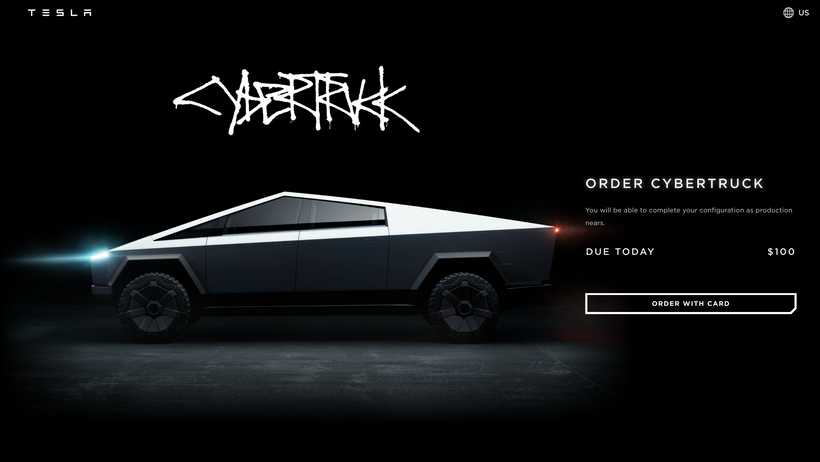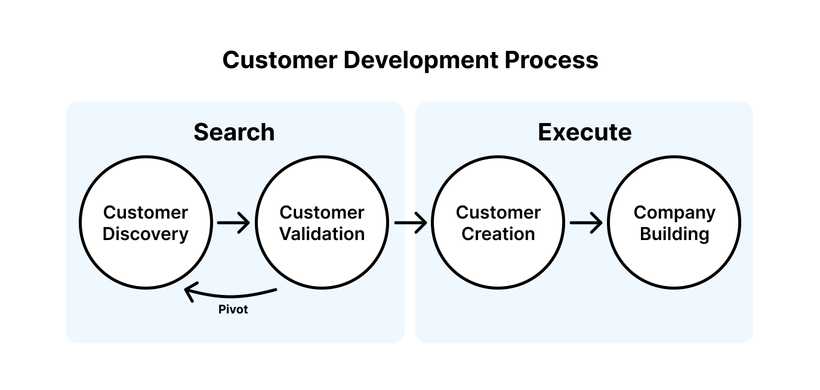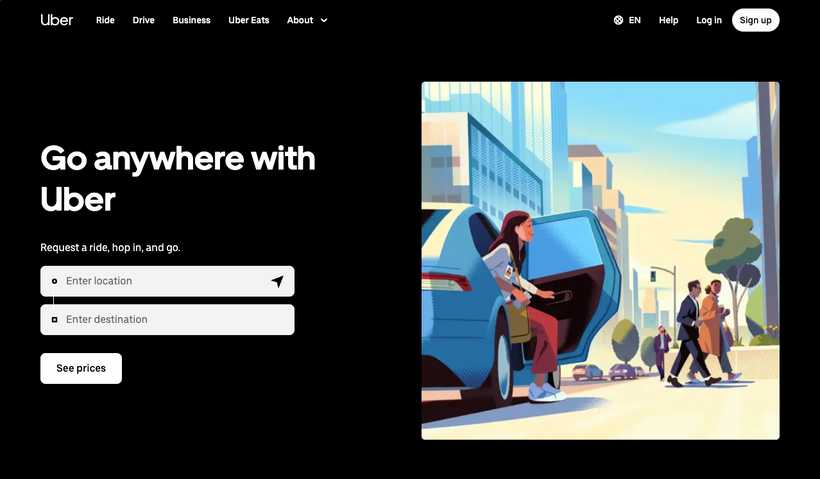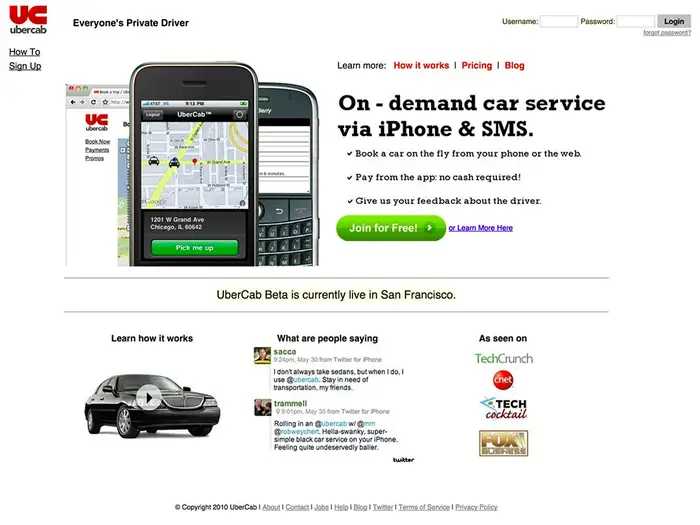I've been immersed in software development since the age of 15, starting out in my bedroom as a self-taught with a dream of one day launching my own startup.
I initially held the belief that proficiency in coding alone was sufficient for launching a successful company. It took numerous failed projects to grasp the vital distinction between building a product and building a sustainable business.
In today's landscape, creating a product is relatively straightforward and cost-effective. The true challenge lies in identifying the right product to develop and stand out from the noise of many competitors.
Contrary to popular belief, both can be achieved without a fully functional product through customer development.

What is customer development?
Customer development is a methodology for building and iterating on products or services by deeply understanding customer needs, validating assumptions, and iteratively refining the offering based on customer feedback.

Here are the key components of customer development:
-
Customer Discovery: In this phase, entrepreneurs or product teams try to understand the problems and behavior of target customers through qualitative interviews.
I covered in greater detail how to recruit people for customer discovery interviews and what to ask in a customer discovery interview. -
Customer Validation: Once initial hypotheses about customer pain points are formed, the next step is to validate these assumptions by testing the product concept on a larger sample of prospects. This may involve creating surveys, prototypes, or minimum viable products (MVPs) to gather feedback and assess demand quantitatively.
I often used these artifacts instead of interviews to discover customer problems and it never brought me any relevant information.
Surveys are made of leading questions, that is, questions that suggest a particular answer and contain information the examiner is looking to have confirmed. People can only rank their pain points in relation to the choices you have entered. If their top problem isn't there, they have no way of letting you know, and you never discover it.
The same goes for prototypes and MVPs. People will give feedback on what they see. Therefore, they are more useful to validate rather than discover customer problems. -
Customer Creation: With validated problem and product assumptions, the focus shifts to acquiring and converting customers. This stage involves refining the product offering, messaging, and marketing strategies to attract early adopters and build initial traction.
For many years I skipped the search phase and jumped straight into the execution phase. Instead of asking myself “What are my customers' main problems?” and talk to them to find answers, I would build the product and then ask myself “What main problems can I solve with my solution?”. At that point, because I had already decided to build a hammer, everything looked like a nail. I was faking the problems to justify my solution, to no avail.
Customer creation must be rooted into real customer stories and pain points. People don't care about your solution, but their problems. Investing in marketing and sales initiatives without compelling messages that get their attention and products that make them more successful is a waste of time and money.
Prospects are more likely to respond when you speak their language. The fastest way to learn their language is to speak with them directly. -
Company Building: As the customer base grows, the emphasis shifts towards scaling the business operations, optimizing customer acquisition channels, and building infrastructure to support growth.
In my first startup attempts I applied the strategies from this stage because there are many more books available and it's natural to keep successful companies as reference and try to emulate them. However, they clearly play in a very different league with very different rules, and many tactics that work for them didn't work for me.
For example, assume you have never heard of Uber and see their landing page today for the first time. With no context about who they are and how it works it might be difficult to understand it in a few seconds.
Uber landing page today Introducing your new product with this same communication style will sound very confusing because nobody knows about you. You have to be much more dry and direct, as Uber was in the early days.

First Uber landing page This applies to every aspect of the business: marketing, sales, product development, etc.
Uber went through the full customer development journey like everybody else. They adopted different strategies according to the stage they were in. You can look at the evolution of their landing page here.
Product development vs customer development
Many founders are naturally drawn to product development activities, such as coding and designing features.
You may view customer development as less exciting or less tangible compared to product development and prioritize activities you perceive as directly contributing to the product's creation.
But customer development is crucial for building products that resonate with users. By understanding customer needs and pain points upfront, you can prioritize features that provide the most value.
Many times I found myself building things very different from what I had originally planned.
Transitioning from a product development to a customer development mindset involves a fundamental shift in priorities and methodologies.
| Product development mindset | Customer development mindset |
|---|---|
| Focus on creating and refining a product or service based on internal assumptions and expertise. | Focus on understanding customer needs, pains, and preferences before developing or refining a product. |
| Often operates on assumptions about customer needs and preferences, with validation occurring later in the process. | Prioritizes early validation of assumptions through direct interaction with potential customers. |
| Aims to deliver a finished product, with learning as a byproduct of the development process. | Prioritizes learning as a core objective, with the goal of gathering insights about the target market to inform product development decisions. |
| Typically follows a linear process of design, development, and testing, with iterations occurring mainly during later stages. | Embraces an iterative approach with cycles of hypothesis formulation, testing, and learning from customer feedback throughout the development process. |
| Often focuses on achieving product-market fit, where the product meets the needs of a specific market segment. | Prioritizes finding the right problem-solution fit first before scaling to broader markets. |
| May lack deep empathy for customer needs, with decisions driven more by internal goals and capabilities. | Requires a deep understanding of customer perspectives, motivations, and challenges, fostering stronger connections with customers. |
Common founders objections to customer development
Despite understanding the benefits, it took me a while to trust the process and make the leap. Here are some of the unconscious objections you might have and some ideas to positively reframe them:
-
"We don't have time for customer development": Founders often face tight timelines and limited resources. They may perceive customer development as time-consuming and resource-intensive, preferring to focus on building and launching their product quickly. However, the time spent talking to people first is gained back later because of the reduced risk of reworking the wrong product.
-
"We're worried about losing control of our vision": Founders often have a strong vision for their product or company. They may be hesitant to engage in customer development if they believe it conflicts with their original idea or requires compromising on core principles. However, it's critical to align your motivations with customer needs and market demand early on.
-
"We already know our customers": Founders may believe they already have an in-depth knowledge of the target audience and assume they understand customer needs without conducting formal customer development activities. However, validating assumptions through direct interaction with potential customers always helps uncover blind spots and refine ideas based on real-world feedback. This complements internal expertise rather than weakening it, leading to more informed decisions.
-
"We are afraid of negative feedback": Feedback obtained through customer development activities may not always be positive. Founders may prefer to avoid such feedback or believe they can address any issues after the product launch. However, negative feedback is an invaluable source of insight that can highlight areas for improvement and prevent costly mistakes. Embracing constructive criticism early on allows you to address concerns proactively, leading to a stronger product and better customer experience and relationships in the long run.
-
“We are not sure how to conduct customer development activities”: Customer development is a structured process that must be learned and practiced. Here are a couple of books that helped me in the early days:
- Lean Customer Development by Cindy Alvarez
- Running Lean by Ash Maurya
Also, in this blog I try to provide you with ready-to-use tactics and principles that worked for me in the last couple of years building Gems, so that you can focus directly on learning from users.
Conclusion
In today's highly competitive landscape, customer development is essential to validate the actual demand for a product or feature before investing significant time and resources into its realisation.
By listening to people's feedback you can also build more trust and cultivate loyal users who not only support your business but also become advocates for your brand, helping you attract new customers.
Customer development is critical to make something people want and to reach those who want it.